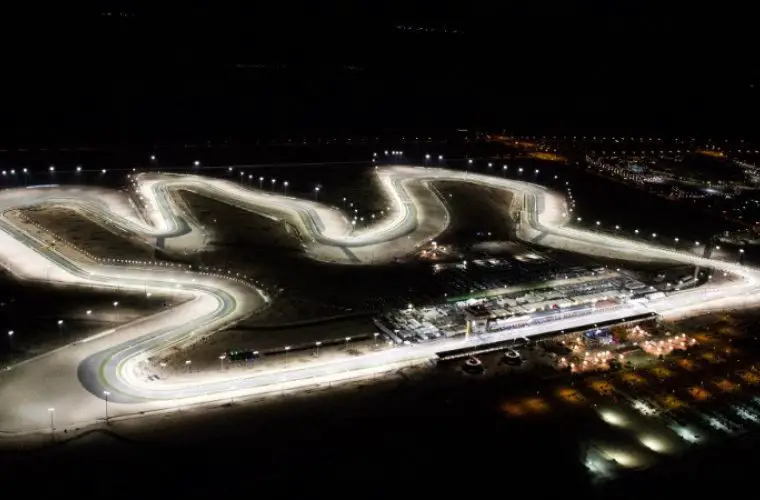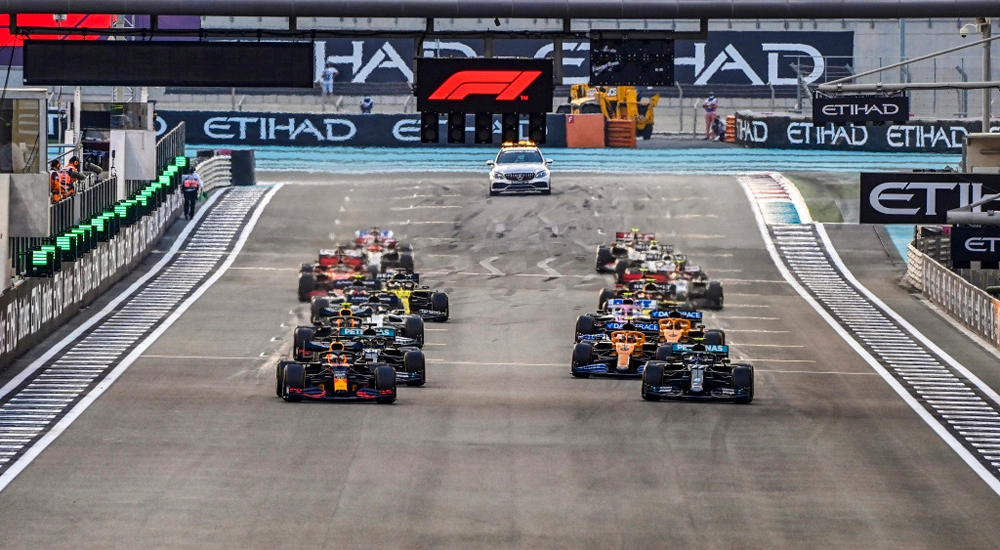The Qatar GP is scheduled to take place from 06th to 08th October at the Lusail International Circuit – let us take a look at the DRS zones at this venue
The Lusail International Circuit spans a distance of 5.38 kilometers and features a total of 16 corners, comprising 10 right turns and 6 left turns. The circuit’s primary straight stretches for slightly more than one kilometer, serving as the sole F1 DRS (Drag Reduction System) zone and enabling cars to achieve speeds exceeding 220 kilometers per hour during races. The sharp right bend leading into the first turn presents the prime opportunity for cars to pass one another. Additionally, the nearly flat-out sequence of three consecutive right-hand corners from turns 12 to 14 is expected to pose a tire-wearing challenge to drivers.

Lusail distinguishes itself by having only one designated DRS zone, setting it apart from some other racetracks on the Formula One calendar.
This unique aspect adds excitement but also limits overtaking opportunities. In 2021, it hosted the 20th race of the Formula One season, marking the debut of the Qatar Grand Prix.
Substantial renovations and facility improvements were carried out in preparation for the second edition of the Grand Prix, including a significant increase in spectator capacity from 8,000 to 52,000. The circuit itself measures 5.419 kilometers (3.367 miles) in length, featuring an impressive 1.068-kilometer (0.664-mile) main straight. Additionally, artificial grass surrounds the track to prevent sand from encroaching onto the racing surface.
The Lusail Circuit is one of the most challenging tracks in the F1 Calendar
The Lusail International Circuit presents a formidable array of challenges for both Formula 1 drivers and teams. Situated in the desert state of Qatar, the intense heat poses a substantial hurdle. These extreme temperatures can lead to tire wear and engine overheating, necessitating innovative solutions from teams to maintain car performance and tire longevity. Additionally, the circuit’s long straights offer opportunities for high-speed racing, placing a premium on engine power and aerodynamics as teams vie for an advantage in straight-line speed. Nevertheless, these straights are interspersed with technical corners demanding precise braking and handling, thus rigorously testing drivers’ skills.

The combination of long straights and tight corners at the Lusail International Circuit necessitates a finely-tuned setup for Formula 1 teams. They must strike a delicate balance between achieving top speed and ensuring effective cornering ability.
Furthermore, the circuit’s night races held under floodlights introduce an additional layer of complexity, with visibility and glare management emerging as pivotal concerns. Additionally, the harsh desert climate, characterized by scorching temperatures, presents a formidable challenge to both the cars and the drivers. Sustaining engine and tire performance in these conditions remains an ongoing battle.
More Formula One News
- Lewis Hamilton doesn’t support IOC’s decision on Black Lives Matter gear during Olympics
- Max Verstappen left surprised as he reaches 100 race milestone with Red Bull
- Damon Hill left in awe after Lewis Hamilton racks up 100 poles in F1 ahead of 2021 Spanish GP
Follow our dedicated Formula One page for instant Formula One news and updates

